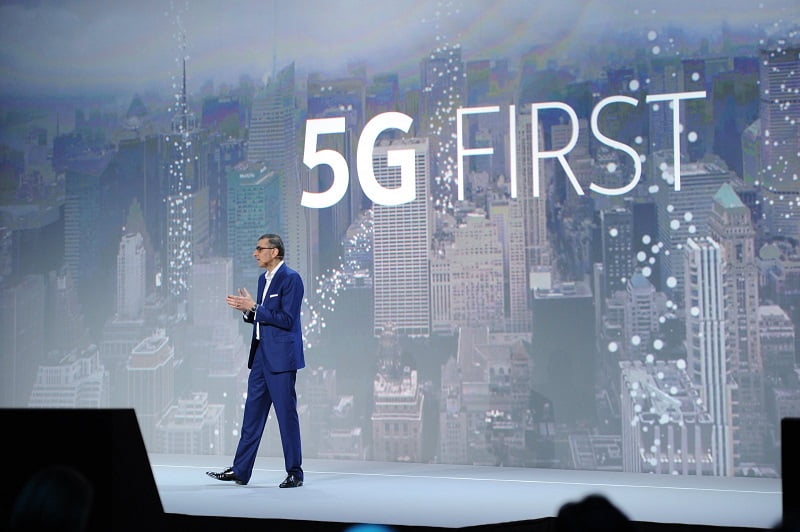
Nokia CEO Rajeev Suri announced 5G FIRST on the eve of Mobile World Congress 2017 in Barcelona. (Nokia)
While Nokia is racking up contracts for its 4.5G product, signing 145 deals, the company aims to be ready for 5G when the time comes.
“When 5G does come, we will be ready,” said Nokia President and CEO Rajeev Suri during the company’s first-quarter 2017 earnings call. But like other vendors, Nokia is not putting all of its eggs in the 5G basket. Before operators can move to 5G, they need interim technologies, like the 4.5G and 4.9G products that Nokia touts.
Suri mentioned renewed momentum in mobile networks in the first quarter of 2017 and said part of that was driven by strong market interest in Nokia’s 5G roadmap, going from 4.5G to 4.5G Pro, to 4.9G, and then on to 5G.
At Mobile World Congress 2017 in February, Nokia announced its 5G FIRST portfolio. The radio access network components of 5G FIRST comprise new Nokia massive MIMO Adaptive Antennas for 3.5 GHz, 4.5 GHz, 28 GHz and 39 GHz frequency bands, the AirScale System Module, AirScale cloud RAN technology and software.
Nokia said it had upgraded its AirScale and AirFrame platforms to 5G based on specifications developed by the KT Special Interest Group and Verizon 5G Technology Forum, and the platforms will be adapted to 3GPP as standards develop.
With the introduction of 5G FIRST, Nokia said operators will gain a first-to-market advantage based on early specifications. In addition, Nokia will use the lessons learned through real-world deployment to contribute to final 3GPP standardization of the technology.
RELATED: The meaning of 4.5G: Huawei, Nokia, Ericsson, Qualcomm weigh in
But before 5G, Nokia has been touting the launch of its 4.5G Pro and future deployment of 4.9G technology since last fall, when it announced that 4.5G Pro, powered by its 5G-ready AirScale portfolio, would help operators meet capacity and speed requirements. It promised that 4.5G Pro will deliver 10 times the speeds of initial 4G networks, making it possible for operators to offer gigabit peak data rates.
RELATED: Amid 5G hubbub, Nokia explains its 4.5G Pro moniker
Nokia has said it will introduce its 4.9G technologies by the end of 2017, allowing operators to manage the significantly higher infrastructure demands on the path to 5G. A 4.9G massive MIMO Adaptive Antenna will also increase cell capacity by up to five times, while a new 4.5G Pro AirScale Micro Remote Radio Head will allow operators to take advantage of unlicensed spectrum to enable Gigabit speeds.
Rival Ericsson is touting what it calls the industry’s first 5G New Radio (NR)-capable radio, called Ericsson AIR 6468. It features 64 transmit and 64 receive antennas, enabling it to support Ericsson’s 5G plug-ins for both Massive MIMO and Multi-User MIMO.
The high-performance beamforming, required for Massive MIMO, is enabled through the use of a split Cloud RAN architecture, which brings intelligence and scalability to this new radio. The AIR 6468 is designed for compatibility with the 5G NR standard while also supporting LTE.
[“Source-fiercewireless”]










